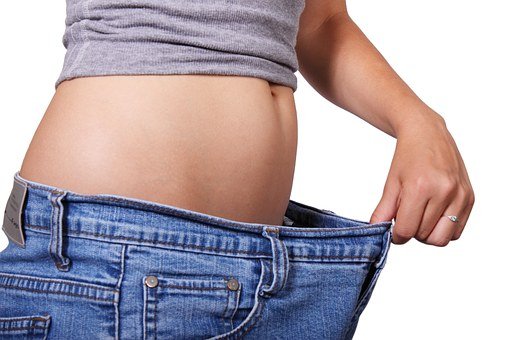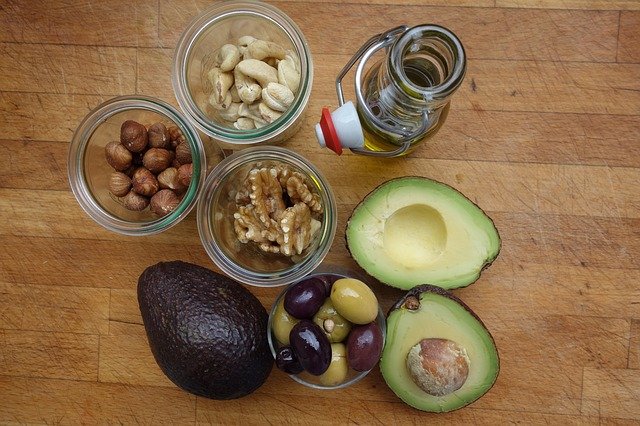KETO…HOW I LOST 50LBS in 5 MONTHS Part 1
Hello Steemit community,

Over the past 5 months my diet has been Keto. I don’t like saying I’m “on” a Keto diet because that implies that you will eventually be off of it. Having been Keto for over 5 months I can confidently say that this is just how I eat now. Keto, for me, is not for the short term. Instead it is a nutrition plan that has improved my life in more ways than one. If you are interested and would like to know what Keto can do for you, you are in the right place I will outline in this article What Keto is exactly, a brief history of the Keto diet, who this nutrition plan could be for, and finally how to do it.
What is Keto?
Keto is short for Ketosis. Ketosis is the state the body enters when glucose in the body has been exhausted. In the glucose exhausted state, which can be achieved either by Starvation/ intermittent fastening or carbohydrate and sugar restriction, the liver produces Ketones bodies (acetoacetate, beta-hydroxybutrate) by breaking down fatty acids. Ketones then enter the blood stream and are then metabolized by the mitochondria and is utilized by the body as energy. Once someone’s body has switched over from using glucose and carbohydrates to Ketones as their body’s main fuel source it is said they are fat adapted.
Ketone bodies have many benefits aside from being the body’s alternate fuel source. Once fat adaptation has occurred you will notice serval changes. The first thing I noticed is a mental clarity that is hard to put into words. An article from Psychology Today put it this way:
…it is actually less efficient to make ATP from glucose than it is to make ATP from ketone bodies! A more efficient energy supply makes it easier to restore membranes in the brain to their normal states…
So if a more efficient brain was the one and only side effect of Keto, it would be enough for me, however it is not.
The second thing I noticed is extreme appetite suppression. Although according to a paper published in the U.S Nation Library of Medicine “the hunger-reduction phenomenon reported during ketogenic diets is well-known, the underlying molecular and cellular mechanisms remain uncertain” It may not be known for sure what causes the Hunger-reduction the paper states an increased sensitivity to the hormone leptin and suppression of Ghrelin may be a contributing factor.
Decrees in hunger is also a factor of why the diet works so well for weight loss. A sort of self-regulation of caloric intake occurs. One does not snack as often, therefore reducing the overall calories consumed. As we all know a side effect of lowering calories is losing weight.
If you’re someone who has survived on energy drinks to get you through your busy day then this next benefit is definitely going to interest you. Stable energy all day long is the best thing about Keto. No need for the mid-afternoon energy drink followed by the late-afternoon snack and second energy drink. Energy levels are stabilized due the lack of insulin spikes and the increase in ketone bodies in the blood. This normalize and maintain energy levels.

History
Originally designed for epilepsy, especially in children, the Ketogenic diet gets its routes from the positive effects of fasting and the reduction in epileptic episodes. Fasting has been known to humans for thousands of years to help with certain sicknesses. Most animals know this themselves. You will notice if your dog is not feeling well his appetite may suffer. This is because when one does not eat your body can use more of its energy resources on more important things then digesting food. According to Livestrong.com as high as 30% of your daily energy expenditure could be utilized for digesting food(depending on the food you eat.) In 1921 the Mayo clinic made the correlation that patients who have fasted had less seizures.
In 1924 Dr, Russell Wilder would be the first person to link acetone and beta-hydroxybutyric as being present in the blood of people that were in a fasted state. Later that same year he would mimic the state of being fasted through an eating protocol that he termed the Ketogenic Diet.
Who is it for?
The Ketogenic diet is for anyone who wants to loose weight and improve overall health. Although my experiences may be just anecdotal, they could be something to consider. Since I have been on this diet I have felt better overall, had more energy, and have been more focused. Furthermore, any cravings of carbs and sugar that I thought I would have were absent all together. I have not craved sugar or carbs at all. Finally, I have been an overall a happier person. This Diet may not be for everyone. It is hard to tell people to stop eating carbs and sugar and that it will actually make them feel better. The only way to know if this nutrition plan is right for you is to try it out for yourself.
How to eat KETO
Seeing as this is a nutrition plan its best to start off with the Macro Nutrient ratios that are required.
- Fat: 75%
- Protein: 20%
- Carbs: 5%
The ratio above has worked well at keeping me in ketosis. These ratios are just a guideline and should be tailored to the individual. However, it is my opinion that this is a good starting point. The biggest hurdle one will go through is getting the proper amount of fat into their diet. When first starting out I would not be particularly concerned with the type of fat that you are consuming. Once ketosis is established and optimized Keto is desired then I would recommend the following as great sources of fat.

- Avocado’s
- Grass Fed Butter
- Coconut Oil
- Macadamia Nuts
- Pecans
- Sardines
- Fish of all sorts
- Organic Cheeses (like Kerrygold)
- Grass Fed Beef
- Organic Eggs
Protein should be consumed at a moderate level and Carbohydrates should be completely avoided. The Carbohydrates you do consume should come from low Glycemic Vegetables. These will be nutrient dense and high in fiber and will not kick you out of ketosis. These include:

- Spinach
- Cauliflower
- Broccoli
- Kale
- Orka
- Avocado ( I know it a fruit )
- Fennel
- Jalapeño
There are many more vegetables out there and with a quick google search for “Low GI Vegetables” one can explore all the possibilities. Unfortunately Fruit for the most part is excluded from this diet. In moderation on can have various berries due to their high fiber content? Remember don’t overdo it. If anyone is interested in getting specific Keto recipes let me know in the comment section below. If you still have questions about this nutritional plan I will address those questions. As I stated in my introduction post I want to be interactive with my readers. So criticism is looked at favorably and as long as the discourse is civil and productive I welcome it. I want to thank everyone who took the time to read this and if you feel as if I deserved it please follow me for updates and help me out by up voting this post.
Sources.
https://www.psychologytoday.com/blog/evolutionary-psychiatry/201104/your-brain-ketones
https://www.ncbi.nlm.nih.gov/pmc/articles/PMC4313585/
https://optimisingnutrition.com/2015/07/20/the-glucose-ketone-relationship/
https://www.livestrong.com/article/320370-how-many-calories-does-digestion-use-up/